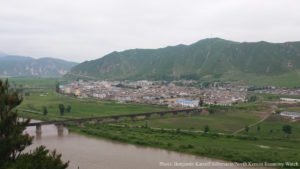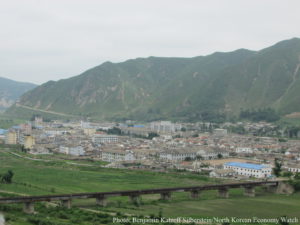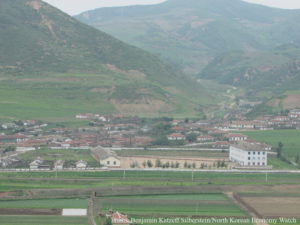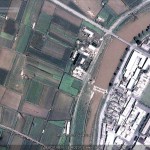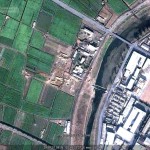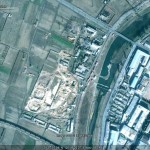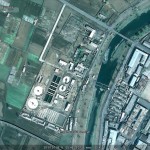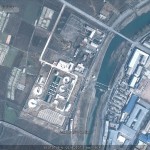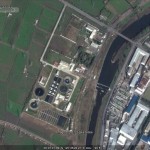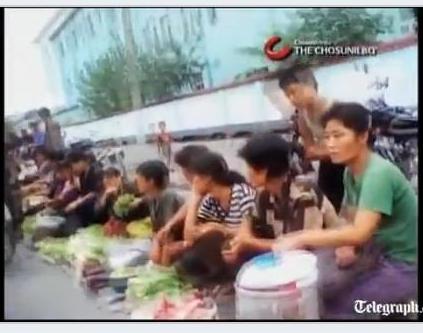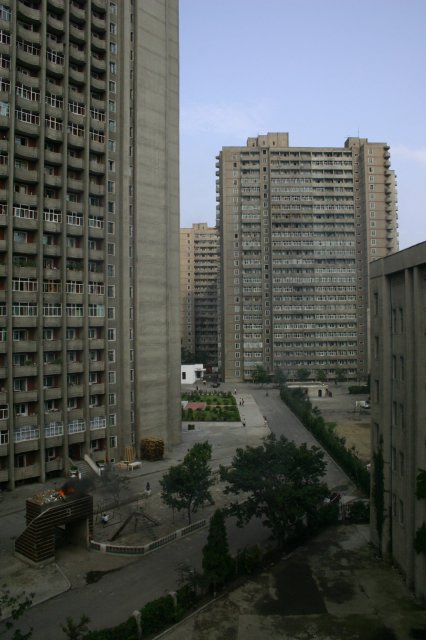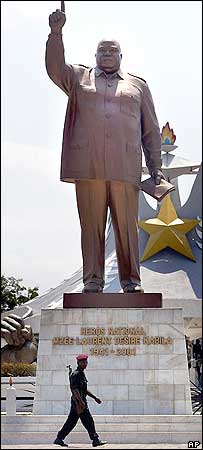By Benjamin Katzeff Silberstein
Larger-than-usual seasonal rains has caused flooding in several cities along the Sino-Korean border. Emergency evacuations have been issued in Tumen and Hunchun on the Chinese side. On the North Korean side, Namyang, a small town in Onsong county, has been struck by unusual flooding. DailyNK explains:
Flooding in North Korea typically occurs near the West Sea, not near Namyang, which is located in Onsong County, North Hamgyong Province. In areas like Sinuiju, downpours during the rainy season coupled with high tide in the West Sea are known to drive up the water levels of Amnok (Yalu) River and lead to flooding; however, such an occurrence is rare in areas adjacent to the Tumen River, particularly in the hillside city of Namyang.
As is usually the case in North Korea, flooding impacts are exacerbated by environmental factors related to the economy and food production:
It is therefore believed that unusually heavy rain, which battered the greater northeast region, contributed to the flooding, and was likely exacerbated by the use of embankments as small plots to grow produce by local residents, whose livelihoods depend on doing so. Weeding and digging around this area in order to plant beans and other crops is thought to have compromised the strength of the river banks, yet no preventative measures were put forth by the authorities.
DailyNK has a few pictures of Namyang taken from the Chinese side, showing flooding and destruction.
Full article in DailyNK:
Severe flooding sweeps across Namyang
Kim Ga Young
DailyNK
2016-09-02
For reference and comparison, the following pictures I took earlier this summer show Namyang in ordinary times (click for larger pictures):
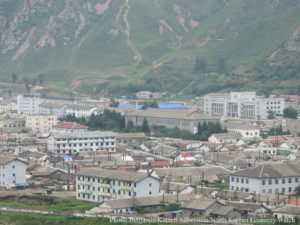
Namyang, Onsong county. You can see the train station to the right in the picture. Photo: Benjamin Katzeff Silberstein.
(Update 2016-09-04): At least ten people have died in North Hamgyong province as a result of the floods, Voice of America reports (in Korean):
국제적십자사 IFRC가 큰물 피해를 입은 함경북도 지역에 긴급구조팀을 파견해 구조활동을 펼치고 있다고 유엔이 밝혔습니다.
타판 미슈라 주 북한 유엔 상주 조정자 겸 유엔개발계획(UNDP) 상주대표는3일 북한 내 유엔 기구들과 비정부기구 관계자들에게 보낸 이메일에서, 태풍으로 인한 북한 홍수 피해가 예상보다 훨씬 심각한 것으로 파악되고 있다며 이같이 밝혔습니다.
‘VOA’가 3일 단독으로 입수한 이 이메일에 따르면 이번 폭우로 함경북도 지역이 가장 큰 피해를 입었으며, 특히 회령시과 문산군, 연사군, 청진시, 김책시, 경송군, 길주군, 라선시 일대에 큰 피해가 발생했습니다. Summary in English (by NKEconwatch): according to Tapan Misura, UNDP country representative in North Korea, North Hamgyong province has been struck by flooding in the past few days, to a much worse degree than expected. Especially Hoeryong, Musan, Yeonsan, Chongjin, Kimchaek, Kyeongseong, Kilju and Rason have taken strong hits.
또 홍수로 10여 명이 사망하고 1만 여 가구가 피해를 입었으며, 6천7백여 가구가 파괴되고 7천가구가 파손된 것으로 알려졌다고 미슈라 상주대표는 밝혔습니다. Summary in English: As a result of the flooding, ten people have died, about 10,000 homes have been damaged, 6,700 homes have been destroyed and another 7,000 homes have been broken/damaged.
[…]
특히 함경북도 회령시의 피해가 심해 가옥 2천개 이상이 물에 잠기고 1천개 이상의 집이 완전히 파괴됐다고 밝혔습니다. 또 적어도 2만6천여 가구가 식수도 없이 고립된 상황이라고 밝혔습니다. Summary in English: destruction has been particularly heavy in Hoeryong in North Hamgyong, where 2,000 houses have been submerged in water, and over 1,000 houses have been completely destroyed. Moreover, at least 26,000 households now lack access to drinking water.
미슈라 상주대표는 함경북도 일대에 지금도 계속 비가 내리고 있고 앞으로 며칠 간 비가 예보돼 있어 피해가 더 늘어날 것으로 보인다고 말했습니다. Summary in English: According to Misura, rain is continuing to fall in North Hamgyong, and will do so over the next few days, so the destruction is expected to grow.
Full article here:
유엔 ‘북한 함경북도 등 홍수로 큰 피해…10여명 사망’
Kim Hyeon-jin
Voice of America
2016-09-04
Korean Central News Agency reports some estimated figures on the destruction:
It rained heavily with strong wind in North Hamgyong Province and other parts of the DPRK from August 29 to September 2, affected by a combination of typhoon-10 and low pressure field formed in the northwest.
According to data available at the State Hydro-meteorological Administration, the rainfall reached 320 mm and 290 mm in Kyonghung and Puryong counties of North Hamgyong Province from 00:00 Monday to 12:00 Friday.
And over 150 mm of rain fell in Onsong, Kyongsong, Kyongwon, Yonsa and Hwadae counties of the province as well as some parts of Ryanggang Province including Taehongdan County.
The River Tuman flooded some areas of Hoeryong and Rason cities, Musan, Onsong, Kyongwon, Kyonghung and Yonsa counties, causing big damage.
Especially, flood heavily hit Hoeryong City, Musan and Yonsa counties, claiming 15 people missing in Hoeryong.
17 180 houses were partially or completely destroyed with at least 44 000 people homeless in North Hamgyong Province.
Damage investigation goes on there.
And a campaign to help victims and heal the damage is being conducted in the flood-stricken areas.
Full article:
North Hamgyong Province of DPRK Suffered from Flood Damage
Korean Central News Agency
2016-09-03
